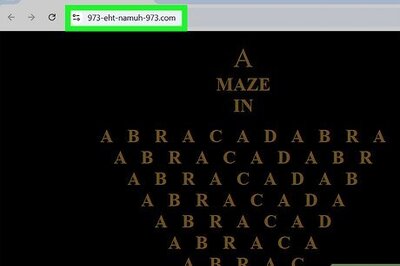
views
- Sign professional emails with phrases like "My Best," "Regards," or "Many Thanks."
- Use "Sincerely" only when finishing a full letter to someone you don't know.
- End a personal email with phrases like "Love," "Cheers," or "Ciao."
Professional Email
Use a version of “My Best” when signing emails to people you work with frequently. Other versions of “Best” include “All Best,” “My Best to You,” simply “Best” and “Best Regards.” Remember that the more words you use, the more formal your sign off will be. Judge the formality based on the person to whom you are writing and their relationship to you.
Avoid “Thanks” or versions of it. Expressing sincere thanks is best done in the body of an email. If you must do this, try using “Many Thanks,” which carries a note of finality.
Don’t use “Sincerely” unless you are writing a full letter. This is a very traditional form of signing a letter; however, it should really only be used in the “To Whom it May Concern” addressed. Use it when you don’t know the person who is reading it. “Sincerely” or “Thank You For Your Consideration” may be appropriate for job applications. Try “Continued Success” if you are looking to leave a partnership or correspondence for a while.
Use “Regards,” “Best Regards” or “Best Wishes” to convey a cordial tone.
End the sign-off with a comma. Then, start a new line.
Sign your first name when emailing most people, especially those you see often. Use your first and last name when you are writing for the first time.
Include your contact info in a signature. Try to keep it short. Include your title, company and contact info. It’s a good idea to preload this onto your email program to save you time. Most companies have a standard signature that they like you to use.
Avoid large corporate logos that can show as attachments on other people’s programs. They will make your email harder to load.
Personal Email
Consider the person to whom you are writing. The closeness of your relationship should determine your closing sign-off.
Save “Love,” “x,” or “xo” for those you truly love, such as family and spouses.
Use “Cheers” if you want to imply an informal, but fun tone. This is extremely common with both personal and professional emails in the United Kingdom and Australia. It is gaining steam in America, but should be saved for people you know very well. “Ciao” can also be used for a playful end to an email. Remember that it may be seen as pretentious if the person doesn’t know you well enough to understand your tone.
Try “Many Thanks” if you are genuinely thanking the person for something. For succinct emails, the use of a thank you in the signature can help save space.
Use “Be Well,” “Get Well” or “Thinking of You” when you are trying to refer to an illness or event. Only use it if you are being sincere.
Opt for “In Haste” if you haven’t had time to think too long on a subject. You can also add “More Soon” if you need to return to the email later.
Finish the sign-off with a comma and a signature. For personal emails, use your first name. Between close friends or partners, you may choose to use a nickname or a first initial.


















Comments
0 comment